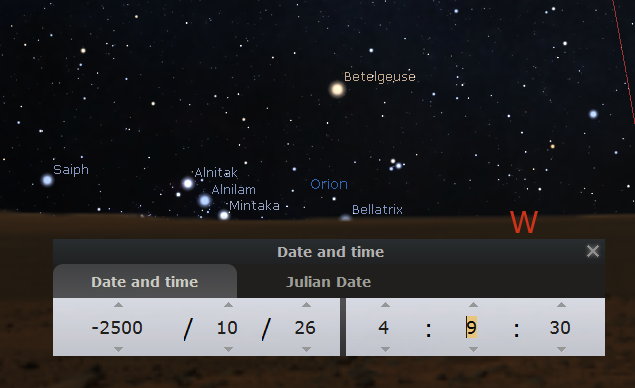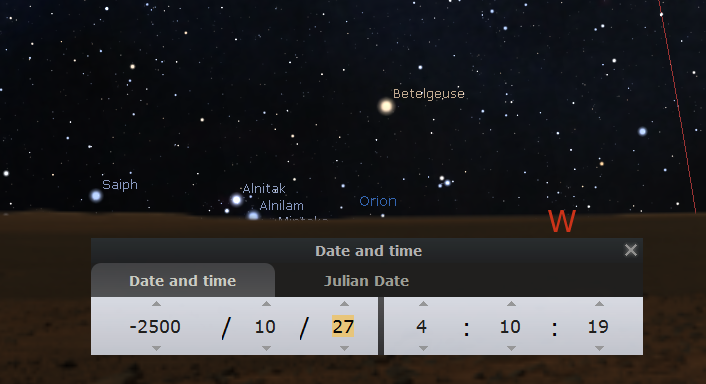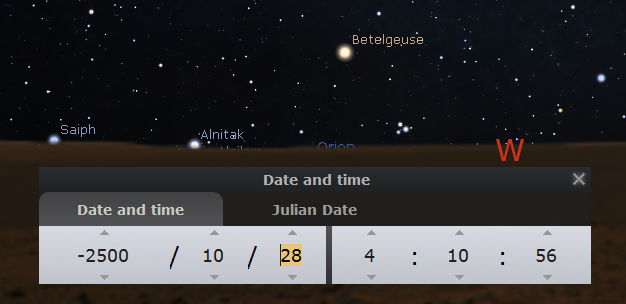It looks like you're using an Ad Blocker.
Please white-list or disable AboveTopSecret.com in your ad-blocking tool.
Thank you.
Some features of ATS will be disabled while you continue to use an ad-blocker.
share:
originally posted by: Kantzveldt
a reply to: Byrd
The premise of the Book in question can only be understood as an initiatory work;
I agree with you here. However, I disagree that it's Egyptian in any sense.
The Book of Thoth, however, draws on cosmogonic themes, but for a purpose wholly novel to us: a metaphysics of semiosis, or sign-production. The Book of Thoth, as best we can understand it, presents a manual of scribal initiation.
I can even agree with this to some extent - but it's not Egyptian.
But that aside, the fundamental approach of the Egyptian to religious mystery was in knowing progressive signs and utterances, it was deeply rooted in initiatory practise, now obviously this is anathema to yourself and secular liberalism in general but you shouldn't be troubling me with your pointless prejudices that lack all objectivity.
The thing is, we know quite a bit about scribes and their profession. They're described in the Satire of the Trades, for one thing, that was written during the First Intermediate Period/Middle Kingdom time period.
There's no initiations.
Initiates of Thoth were practising incubation inside sarcophogus, as in Incubation at Saqqara, this had become popular practise in the Late Period but it's a question of the basis for such inclinations.
...the sources are in Greek, date to the 2nd Century BC, and do not mention coffins. I think that their use of "incubation" may be different than your idea of "incubation." Your text does talk about "incubation sanctuaries in the Greek East", which again indicates this is a Greek practice imported into Egypt and is not Egyptian in any real sense of the word.
I have found several papers on "Incubation" (here's one) and they all say that it's a Greek concept introduced to other parts of the world. So it is consistent with something that moved in with the Ptolemies and attempted to become part of Egyptian culture. It is not an ancient Egyptian practice.
The Orion quote is a Pyramid text but the word that Allen just renders as supplies is what Faulkner translates as Wagy Festival, as that's what it was,a festival of provision of supplies, the mentioning of supplies in connection with Osiris as Sah/Orion is a general theme in the coffin texts, for example spell 235.
Faulkner has an excellent translation, but there's a couple of issues that one needs to be aware of. His translation is now about 70 years old, and was a translation of the compiled pyramid texts where they took everything in all the pyramids and added similar things from coffins for the next several centuries and called it "Pyramid Texts". People tend to read the first book without reading the commentaries in the rest of the books.
Allen's is much newer (and takes into account new information and new revisions done over the last 50 years) and separates the texts back into their individual pyramids so that we see all ten of them as distinct entities. His does not include any material from the Coffin Texts.
Allen's is more accurate.
Of course they noted the heliacal rising of Orion,
I realize I'm being pedantic, here, but they did not note the "helical rising of Orion." "Helical rising" refers to the appearance of a star when it first becomes visible above the eastern horizon before sunrise, following a period when it had not been visible. (Wikipedia, but heck, you can just google heliacal rising)
Constellations and stars aren't the same thing.
Also, Sirius (at the foot of Orion) was visible in July, so parts of Orion would have been visible before November.
the Sokar-Osiris festival of Khoiak at the end of October in the civic calendar was correlated to that, an Orion based festival, the lunar based Wagy festival occuring three months after the rising of Sothis also thus placed a festival of Osiris at that time of the year, the best paper on this was "Les oignons de Sokar", Revue d'Égyptologie 43, p.87-105, 1992 as mentioned here but seemingly no longer available online.
No argument there - that's when those festivals occurred at some point in Egyptian history.
a reply to: Byrd
It seems to have been the case that incubation was commonly practised in the Greek world but not so in Egypt prior to their arrival, though dreams were sought and played an important part in literature, whether incubation was practised within certain sects however is a different question, even the paper you linked to gives some suggestion;
The Khoiak and Wagy festivals more properly relate to Orion entering into the Underworld for a period of invisibility, i checked and on the 23rd of October Orion was rising just over the horizon at sunrise which would correspond to a Heliacal position as the term can relate to rising or setting, by 10 days later no part of the constellation was above the horizon at sunrise.
That makes sense in terms of the Wagy festival being one of supplies and provisions for entering into the underworld, also the Khoiak festival is that of entering into the underworld, including the opening of the mouth.
The Khoiak ceremonies are taking place then as Orion is gradually descending, the Wagy provision festival has taken place over three days prior.
It seems to have been the case that incubation was commonly practised in the Greek world but not so in Egypt prior to their arrival, though dreams were sought and played an important part in literature, whether incubation was practised within certain sects however is a different question, even the paper you linked to gives some suggestion;
In Egypt, the funerary ritual of the ‘Opening of the Mouth’ appears to include a sought dream; the sem -priest sleeps in a workshop and sees a vision of a completed statue. This is part of a long and complicated funerary ritual. The workshop could be construed as a sacred place, being connected with the funeral rites, and the dream could be interpreted as sought, as it seems to be part of a repeated ritual; there is no sacrifice beforehand, but the incident does appear as part of a much longer ritual.
The Khoiak and Wagy festivals more properly relate to Orion entering into the Underworld for a period of invisibility, i checked and on the 23rd of October Orion was rising just over the horizon at sunrise which would correspond to a Heliacal position as the term can relate to rising or setting, by 10 days later no part of the constellation was above the horizon at sunrise.
That makes sense in terms of the Wagy festival being one of supplies and provisions for entering into the underworld, also the Khoiak festival is that of entering into the underworld, including the opening of the mouth.
On Khoiak 22nd (October 26th) takes place the ritual "to dig up the land", which could have been an agricultural (agrarian) ritual, lately connected to the myth of Sokar.
• On Khoiak 23rd, anointment, libation, purification, lead to the embalming of Osiris-Sokar.
• The night of Khoiak 23rd/24th, the ritual of the Opening of the Mouth is read in full at the time of a great funerary vigil.
• The day of Khoiak 24th is devoted entirely to the mummy's protection.
• The night of Khoiak 24th/25th, a procession followed by a navigation transports the mummy towards its tomb.
The Khoiak ceremonies are taking place then as Orion is gradually descending, the Wagy provision festival has taken place over three days prior.
originally posted by: Kantzveldt
a reply to: Byrd
It seems to have been the case that incubation was commonly practised in the Greek world but not so in Egypt prior to their arrival
We are in complete agreement here.
The same applies to Mystery religions.
though dreams were sought and played an important part in literature, whether incubation was practised within certain sects however is a different question, even the paper you linked to gives some suggestion;
In Egypt, the funerary ritual of the ‘Opening of the Mouth’ appears to include a sought dream; the sem -priest sleeps in a workshop and sees a vision of a completed statue.
This is more likely to have been symbolic rather than any true dream. The Opening of the Mouth ceremony is depicted in many places, sleeping in a workshop/dreaming of a completed statue is not really mentioned in the rites. It certainly does not appear in the Opening of the Mouth ceremony for Rekhmira, the most complete version we have
The Khoiak and Wagy festivals more properly relate to Orion entering into the Underworld for a period of invisibility,
They couldn't... Orion is in the sky from November to March
i checked and on the 23rd of October Orion was rising just over the horizon at sunrise which would correspond to a Heliacal position as the term can relate to rising or setting, by 10 days later no part of the constellation was above the horizon at sunrise.
There is no such thing as a helical rising of a constellation.
Individual stars, yes.
Constellations, no.
On Khoiak 22nd (October 26th) takes place the ritual "to dig up the land", which could have been an agricultural (agrarian) ritual, lately connected to the myth of Sokar.
• On Khoiak 23rd, anointment, libation, purification, lead to the embalming of Osiris-Sokar.
• The night of Khoiak 23rd/24th, the ritual of the Opening of the Mouth is read in full at the time of a great funerary vigil.
(etc)
The Khoiak ceremonies are taking place then as Orion is gradually descending, the Wagy provision festival has taken place over three days prior.
It's more a grain/sowing festival, at the beginning of the farming season. The problem here is that the festivals took place at different times and in different nomes and they changed form and ritual over time (as shown in the table on this page).
(and now I think I'll go finish drawing and listening to "Hamilton." I will admit that I've done a lot of reading to answer you here... learning some new stuff. My professors will be pleased at the nuances I can address now.)
a reply to: Byrd
What was actually occurring at that time of year is that the setting of Orion was synchronous with the rising of the Sun, and visa versa, so if we look at the setting of Orion 4,500 years ago location set as Cairo we can see that through the 26th to the 28th each morning a star of Orion's belt is entering into the underworld, they could be said to be in Heliacal setting positions.
At sunset on those days a star of Orion will be re-appearing over the Eastern horizon , this suggested through the Djed column symbolism.



The natural symbolism involved then involves both setting and rising, entering into the Underworld and the return, the main point being it is synchronous with sunrise/sunset, as it is rising at sunset and setting at dawn that does make it the optimum time of year for visibility.
What was actually occurring at that time of year is that the setting of Orion was synchronous with the rising of the Sun, and visa versa, so if we look at the setting of Orion 4,500 years ago location set as Cairo we can see that through the 26th to the 28th each morning a star of Orion's belt is entering into the underworld, they could be said to be in Heliacal setting positions.
At sunset on those days a star of Orion will be re-appearing over the Eastern horizon , this suggested through the Djed column symbolism.



The natural symbolism involved then involves both setting and rising, entering into the Underworld and the return, the main point being it is synchronous with sunrise/sunset, as it is rising at sunset and setting at dawn that does make it the optimum time of year for visibility.
edit on Kam33170vAmerica/ChicagoSunday1231 by Kantzveldt because: (no reason given)
a reply to: Kantzveldt
Again, the constellation of Orion is a bit problematical. During some parts of the empire, it was seen as two different constellations. By Ptolemaic times, they had adopted much of the Greek/Babylonian sky map and so Orion was seen as a single constellation.
I will have to look at the diagonals to see if I can figure out if they tracked any of Orion's stars. This may not be possible to learn, however, since many of the stars and constellations they reference are not well documented and it's anyone's guess as to which grouping they were calling "Horus the elder" (for example.)
Again, the constellation of Orion is a bit problematical. During some parts of the empire, it was seen as two different constellations. By Ptolemaic times, they had adopted much of the Greek/Babylonian sky map and so Orion was seen as a single constellation.
I will have to look at the diagonals to see if I can figure out if they tracked any of Orion's stars. This may not be possible to learn, however, since many of the stars and constellations they reference are not well documented and it's anyone's guess as to which grouping they were calling "Horus the elder" (for example.)
new topics
-
What Comes After January 20th
Mainstream News: 37 minutes ago -
Canada as a state .. how would it work?
General Chit Chat: 46 minutes ago -
Those stupid GRAVITE commercials
Rant: 1 hours ago -
Let's Buy Greenland
General Chit Chat: 2 hours ago -
Planned Civil War In Britain May Be Triggered Soon
Social Issues and Civil Unrest: 5 hours ago -
Claim: General Mark Milley Approved Heat and Sound Directed Energy Weapons During 2020 Riots
Whistle Blowers and Leaked Documents: 6 hours ago
top topics
-
Claim: General Mark Milley Approved Heat and Sound Directed Energy Weapons During 2020 Riots
Whistle Blowers and Leaked Documents: 6 hours ago, 11 flags -
Planned Civil War In Britain May Be Triggered Soon
Social Issues and Civil Unrest: 5 hours ago, 5 flags -
Let's Buy Greenland
General Chit Chat: 2 hours ago, 4 flags -
What Comes After January 20th
Mainstream News: 37 minutes ago, 4 flags -
Those stupid GRAVITE commercials
Rant: 1 hours ago, 2 flags -
Canada as a state .. how would it work?
General Chit Chat: 46 minutes ago, 0 flags
